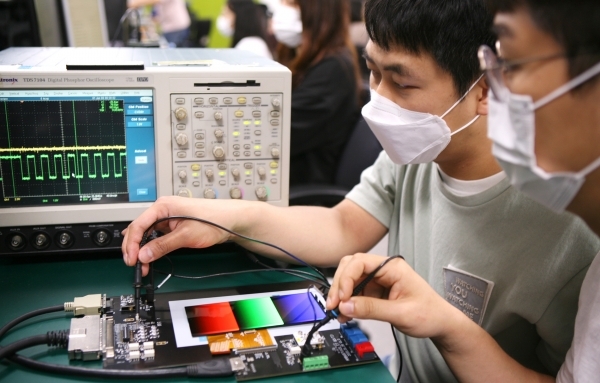ASIA ELECTRONICS INDUSTRYYOUR WINDOW TO SMART MANUFACTURING
OLED panels make headway into notebook and tablet PC markets
Panel makers bet on LTPO technology to speed up the penetration
OLED panels, a de facto display technology for smart phones, are now making headway into tablet and notebook PC markets, as makers of OLED panels have won economies of scale to cut costs.
To further advance into the more lucrative and wider screen markets, Korea’s two largest FPD giants – Samsung Display and LG Display – will invest in the neighborhood of 3 trillion won and 4 trillion won each to expand their respective production capacity.
LG Display is now earmarking about 4 trillion won to newly build TFT backplane and CVD manufacturing lines for small-and-medium size OLEDs in its Paju FPD fabrication hub.
TFT backplane is a matric of thin film transistors in rows and columns that activate RGB, or red green, and blue organic materials to shed lights. The CVD or chemical vapor deposition equipment is to deposit a grid of RGB materials on top of TFT backplane.
Samsung Display also will invest over 3 trillion won to newly build LTPO TFT backplane line to address tablet and notebook PC markets. Capital investments will start in August.
LTPO, or low temperature polycrystalline oxide TFT backplane is a matrix of TFTs that are made of LTPS, or low temperature polysilicon and oxide materials, rather than a-Si, or amorphous silicon. Oxide materials are used to construct switching transistors on TFT backplane.

The LTPO boasts of faster electron mobility and lower power consumption, two key technologies that ensure wider viewing angle, lower latency, fast response time, and lower power budget.
For example, it enables notebook PC maker to cut battery power by 15% to 20% when it is designed in notebook PCs
The technology advantages are one of enablers that allow OLED makers to make forays into tablet and notebook PCs beyond smart phones.
OLED far outmaneuver LCD in picture quality, weight, and design flexibility. When it comes to costs, OLEDs are still expensive, but have been narrowing down the price gap using their hard-won economies of scale.
The price gap will become narrow and narrower, as productivity has been improving.
Samsung Display already had shipped its LTPO OLED panels to be used with Samsung Electronics’ Note20 Ultra notebook PCs
